The Berlin Wall
- Tags:
 What to see Berlin,
Berlin,
Germany
What to see Berlin,
Berlin,
Germany
- Website: www.berliner-mauer-gedenkstaette.de
History's most famous wall
Introduction
The Berlin Wall is one of the symbols of the German capital and of recent German history. It is also known as the 'Wall of Shame' and as the 'Antifascist Protection Rampart'.
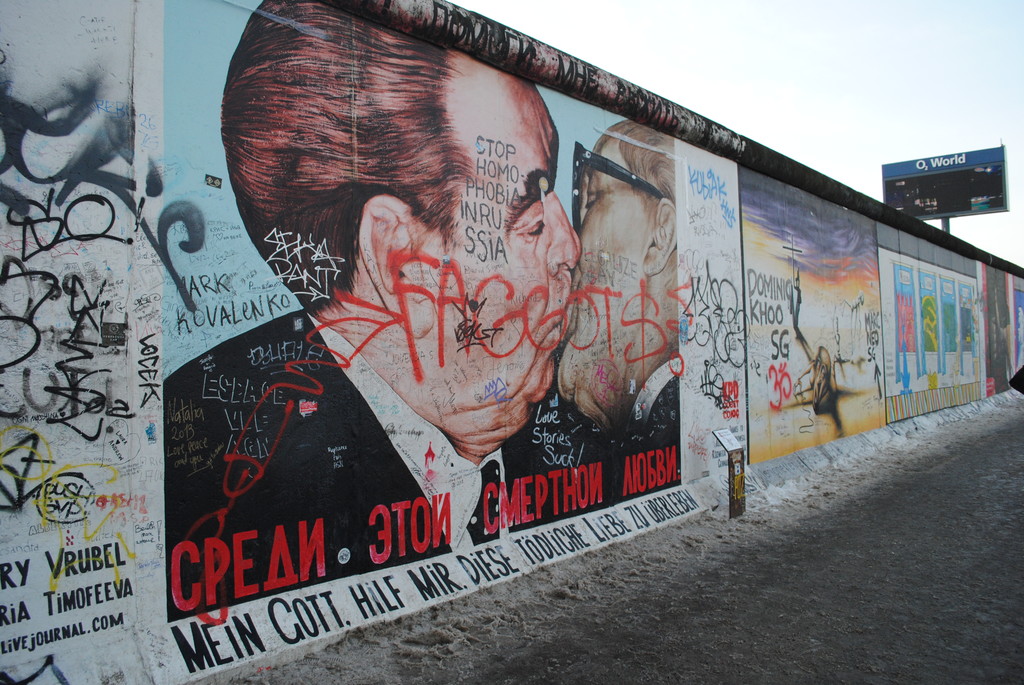
History and dates of the Berlin Wall
The Wall divided the city of Berlin into two parts between 1961 and 1989. It had its roots in the end of the Second World War in 1945, since the two largest powers who triumphed in the conflict both wished to implant their system of government all over the world: the Western and capitalist 'bloc' led by the United States, and the Eastern and communist bloc led by the USSR. The communist-capitalist struggle had begun back at the end of the First World War in 1918. Both ideologies were opposed to one another, and this opposition gave rise to serious economic, political and ideological conflicts. The opposition did not, however, lead to armed or direct conflict between the two blocs, thus giving rise to the term 'the Cold War', a period of tension and espionage which lasted for several decades.
Germany was divided into the Eastern and Soviet area, which eventually christened itself the German Democratic Republic, and the Western, American-controlled (though also counting the influence of France and the United Kingdom) area, which came to be called the Federal Republic of Germany. The conflict between the two blocs intensified to such a point that a wall was constructed to divide the two parts. One of the largest problems was that many citizens were living in the East but working in the West, and thus taking advantage of the prosperous economic conditions of the communist East without contributing to them. Thus, the Soviet system was not functioning as the government wished for it to, and the hatred and suspicion directed towards the opposing Western bloc intensified. There were also large waves of migration from East to West Germany. The building of the wall was intended to stop this migration which were causing the Soviet system many problems.
The plan to build the wall was devised in secret by the Soviets, and the answer to the proposal from the Western block came slowly. John F. Kennedy, the American President at the time, was quoted saying the following: 'It's not a very elegant solution, but it's preferable to war. '
The more than three metre high wall which ran through Berlin covered more than 120 kilometres, and was remodeled over the years. The zone was also protected by a metal fence, trenches and alarms. There were three control points, one operated by the Eastern regime and two by the Western, which were all given phonetic names: Alpha, Bravo and Charlie. The most well-known of these is Checkpoint Charlie. A confrontation once occurred here between the two blocs where ten tanks faced each other on either side of the border, and it seemed as if war would break out. The following day however, both troops retreated without a shot being fired. Perhaps memories of the Second World War were still fresh in their minds, and both sides were 'afraid' to begin a new war.

Visits were permitted on some occasions during the years the wall stood, but the majority of the time it was forbidden to cross the Wall. In fact, many people who happened to be on the opposite side of the wall to where they lived when it was constructed found that they could not return to be with their families, and vice versa. Many people who tried to cross the wall were killed in cold blood or severely injured: others however managed to cross the border without being injured, such a those who escaped into West Berlin through tunnels they dug themselves.
Twenty-eight years after its construction, the Wall fell on November 10th 1989 as the result of various conflicts in the Soviet zone which had weakened the regime, and the growing flight of GDR citizens to other nearby countries. This day was a day of celebrations in Berlin, and definitely one which has gone down in history. Due to communication problems between the Soviets, many citizens knew that the Wall was going to fall before it was officially confirmed, meaning that many foresaw the 'official moment' and climbed over to the other side, while others tried to knock it down using their own tools.
The East Side Gallery
It was the idea of an artist to leave part of the Berlin Wall still standing in order to create an outside area of urban art. The idea was a success, and what is today known as the 'East Side Gallery' was saved from demolition, more than a kilometre long section of the Wall on the banks of the Spree river. The Wall as it is today is, of course, incomparable with how it would have looked in the past, as it is now an ode to freedom and the place of expression for many artists who wanted to leave their mark upon the Wall. Many of the creations there are now world-famous, such as the kiss between Brézhnev and Honeceker with the subtitle 'Mein Gott hilf mir, diese tödliche Liebe zu überleben', meaning in English 'Dear God, please help me to survive this fatal love. ' This kiss took place between two politicians at the 30th anniversary of the German Democratic Republic celebrations in 1979, and although it may seem to suggest otherwise, this kind of kiss is seen as normal and brotherly in countries such as Russia.
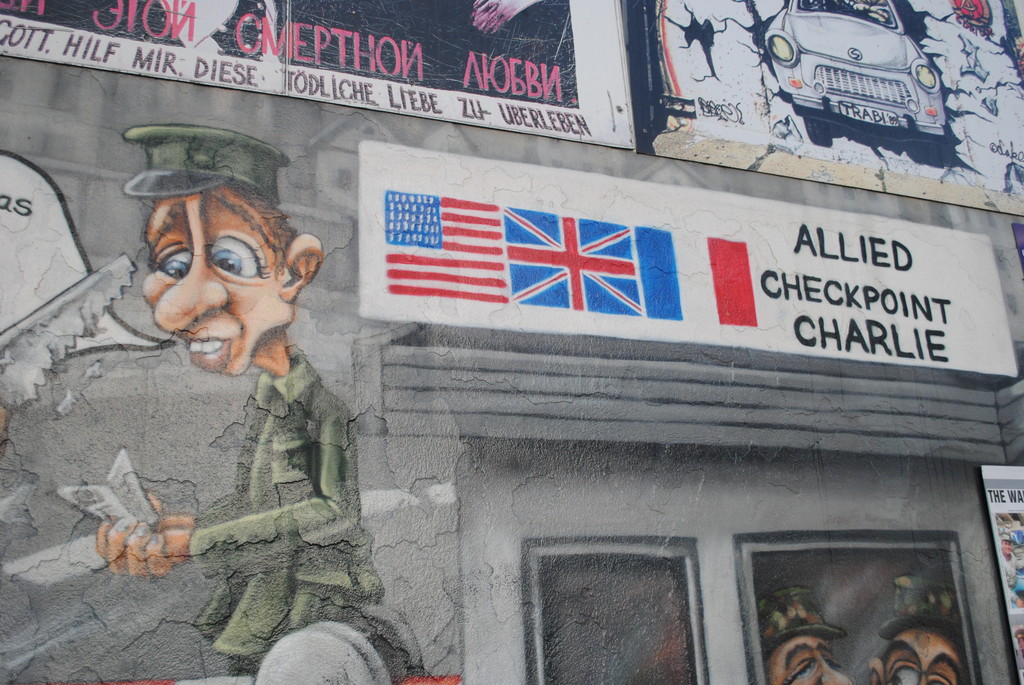
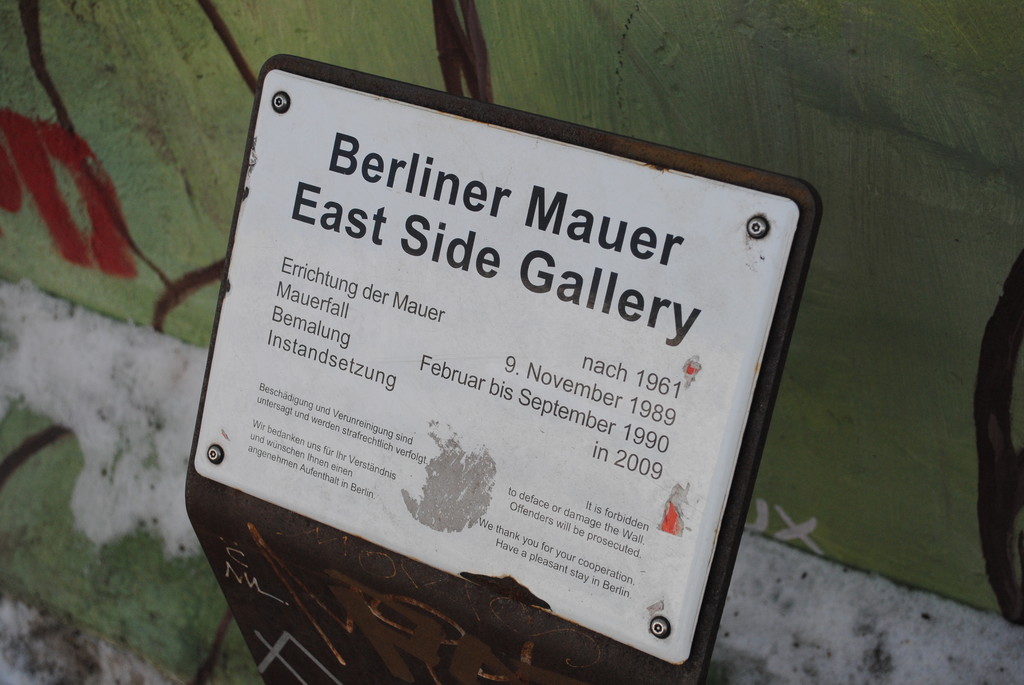
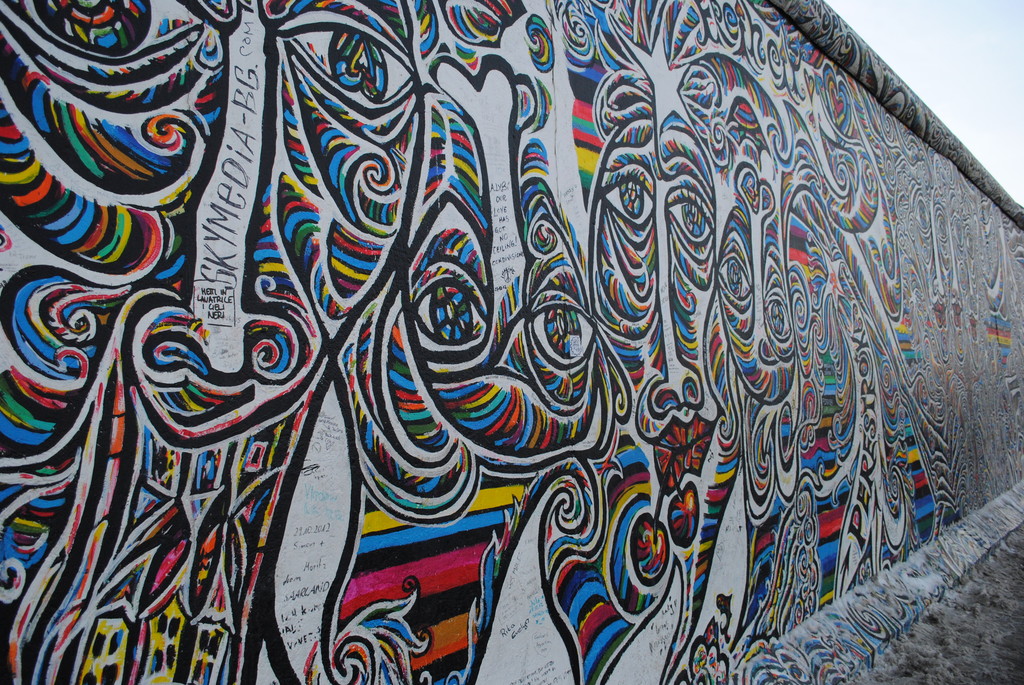
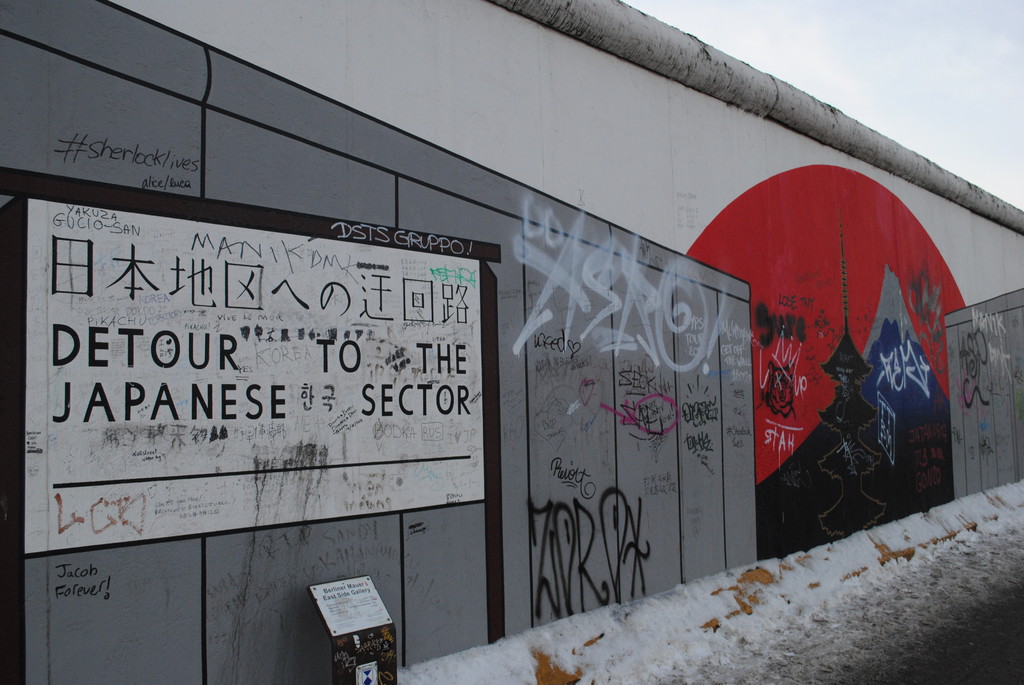
After the fall of the Berlin Wall, a re-structuring and re-modelling of the entire city was carried out for several reasons, the first being that after the bombings Berlin suffered in the Second World War, the city and in particular its most important buildings were left quite severely damaged. The necessary reparations had been impossible to carry out in 1945 due to the preoccupation of the Cold War. Additionally, it was decided that the capital of the Federal Republic of Germany would be moved from Bonn to Berlin, a decision which initiated certain changes in the city for it to adapt to its new functions.
Other remaining sections of the Wall
In Berlin, there are currently sections of the Wall on display in various other parts of the city apart from the famous East Side Gallery area. There are parts at Potsdamer Platz and some at the same location as the Topographie des Terrors, among others (the two places mentioned are the only ones I have seen). You can also see double pedestrian walkways in Berlin, which indicate that this is a place where the Wall used to run, or you can take the bicycle or walking tour which follows the Wall's route with the help of maps and other documents.
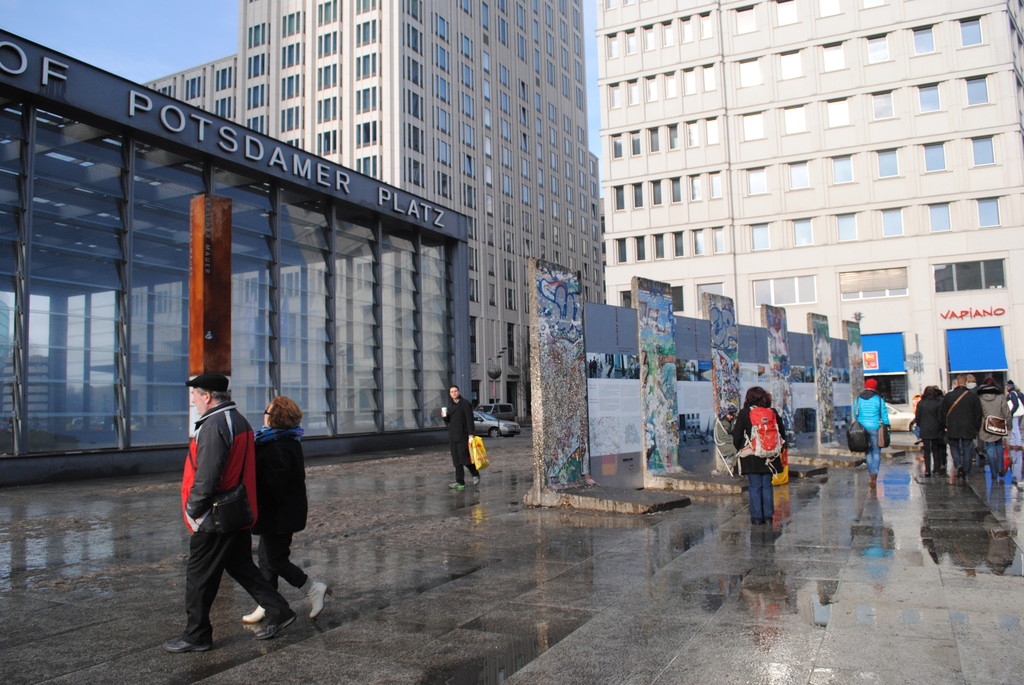
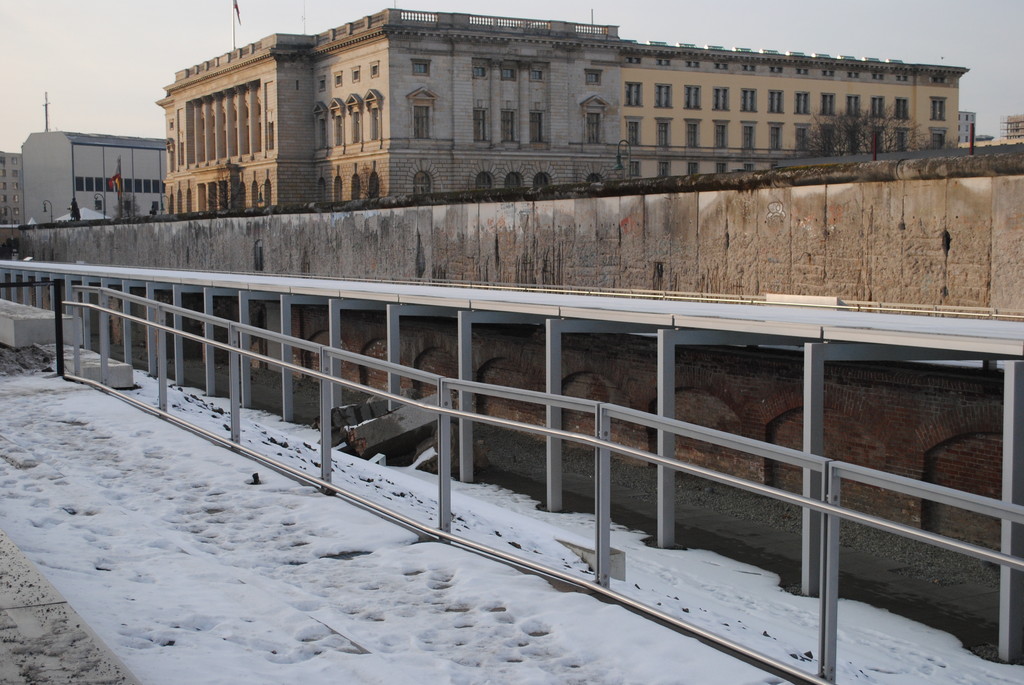
I don't really remember where it was, though I know it was in the city centre, but there is also a free museum where you can see belongings, documents and photos belonging to Berlin citizens from the period of separation by the Wall. I remember there were several suitcases with objects inside, letters to family, etc.
How to get there
To get to the East Side Gallery, the best thing to do is to take the U-Bahn (metro) or the S-Bahn (city train), since it's not located in the city centre. The closest stop is called 'Warschauer Strasse' and is also very close to the Oberbaum Bridge.
Photo gallery
Content available in other languages
- Español: El muro más famoso de la historia
- Polski: Najbardziej znany mur na świecie
- Italiano: IL muro più famoso della storia
- Português: O muro mais famoso da história
- Français: Le mur le plus célèbre de l'histoire
Rate and comment about this place!
Do you know The Berlin Wall? Share your opinion about this place.






















